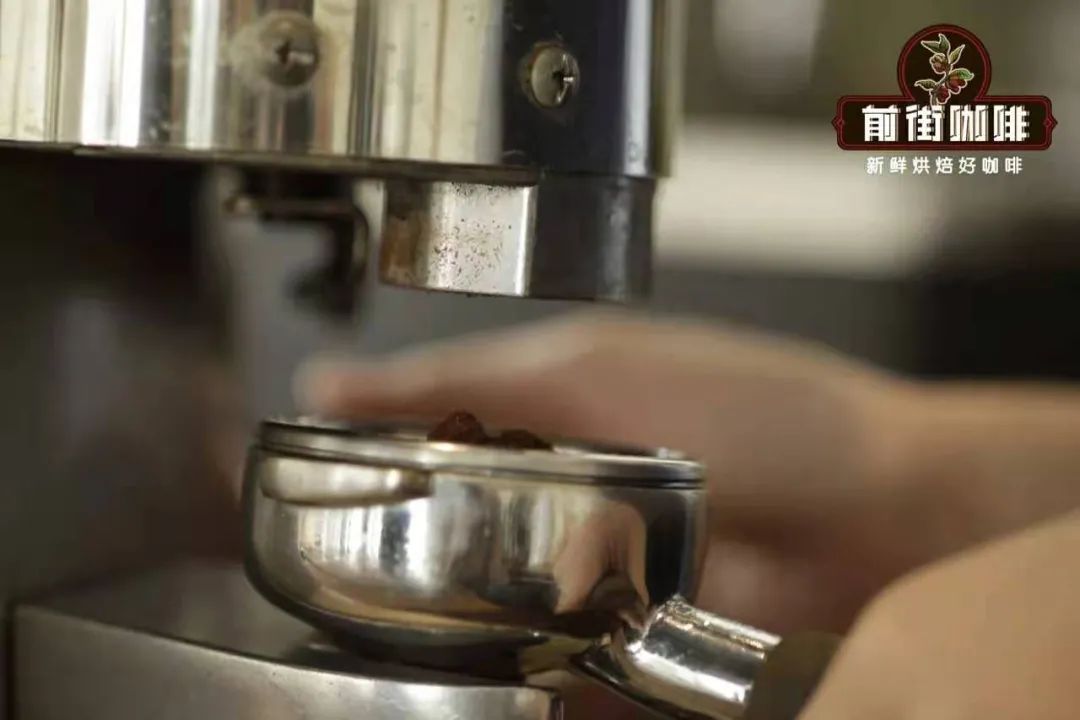Why is the Indian manor boutique black tea expensive? Which manor brand black tea tastes good in Darjeeling?
Tea is a perishable thing. Small farmers who do not have contracts to supply raw leaves to local plantations must line up at locally purchased leaf factories in the hope of getting a reasonable price. As the picked leaves oxidize, their quality decreases every minute, and so does the price. The Indian Tea Council sets a minimum price to prevent exploitation, but the price is volatile. For example, the price per kilogram in January is 23% lower than in December, but the overall trend is rising, which increases the likelihood of small farmers getting rich. According to the Kunur Tea Trade Association (CTTA), two positive developments related to Coved-19 have pushed up the price of CTC (cut, tear, roll) to an all-time high this year. Total sales increased from $73 million in 2019 to $115.2 million (846 million rupees) in 2020. In the north, the situation is very different. In 2020, due to the restrictions of the COVID-19 epidemic, the auction price dropped by 60,100 rand, and the output was estimated to be reduced by 152 million kg. Arijit Raha, secretary-general of the Indian Tea Association, called the trend "very disturbing". The decline in foreign tea consumption has significantly reduced sales in the domestic market, and exports are also declining. Booming producers in southern India, plantations have experienced similar restrictions, but most of the tea is grown on small plots of land by farmers who grow a variety of crops. The monthly minimum price of the Tea Committee is based on auction prices across India, but varies from region to region. In December 2019, the price of tobacco was fixed at 12.45 rupees per kilogram. In December 2020, the threshold was raised by 10.85 rupees / kg, an increase of 87%. In this month's Nilgiris, the average price of green leaves is 23.26 rupees per kilogram, a considerable premium compared with previous years. The impact is direct and beneficial. It takes 4 kilograms of green leaves to produce one kilogram of finished tea, which means the factory has to pay local farmers 44 rupees more for every kilogram of finished tea produced. Small farmers pay more for fertilizers, plant protection and energy, and their transport costs are higher than those of plantations, but only a small proportion of them employ outside labour. If the auction price stays the same, factories without plantations can motivate locals to produce and deliver the high-quality leaves necessary to make good tea. In the past, factories that paid high prices for better quality leaves rarely received returns at auctions, offsetting rising costs. In the first week of January, auction prices in Kochi County soared to 158 rupees per kilogram. According to CTTA, the average price per kilogram of tea in Kunur has been more than Rs100 per kilogram in each auction in the past six months, hitting an all-time high for several weeks. The quantity of Kunur tea is still higher than last year as buyers from the north compete for South Indian tea. "in 2020, many factories received prices unheard of since they started production," said a report from Hindu Business Line. At its final auction in December, Cross Hill Estate "sold a lot of broken orange and white leaves for $3.97 (291 rupees) per kilogram, making it the champion of the whole auction." The Kros Hill Manor, the oldest leaf factory in Odajiri, is now celebrating its Platinum Anniversary. The important thing is that small farmers now produce 50% of India's tea. If small farmers can live a decent life, failed plantations will sell land to the families of tea pickers, who will make a good living by growing and selling tea as the Chinese do. Although most of China's tea (in quantitative terms) is now concentrated on large tracts of industrial land inland, the most valuable tea in China is grown on small plots of land. The neighbors in the local market paid a fair price because the competition led to the improvement of quality. Every year, the winners of the village price the tea that their peers think is the best. Out of respect, no other grower publicly charges higher prices for the same style of tea. As a result, families engaged in tea production have good housing, education and mobility. The grooming worker earns 40 dollars a day. But this is not the case in India, where plucking workers earn $2 (137 rupees) a day. Land reform the Indian government has actively promoted agricultural reform despite the opposition of farmers and farm labor organizations. The Modi government amended the basic Commodities Act to remove existing food inventory restrictions. Second, it introduced a new law-the Farmers' Trade and Commerce (Promotion and Facilitation) regulations 2020 or the FPTC Regulation-to end the monopoly of the Agricultural Market Committee (APMC) and to allow anyone to buy and sell agricultural products. Third, another law, the Farmers (Empowerment and Protection) Price guarantee and Agricultural Services Agreement 2020 (FAPAFS), has been promulgated to legalize contract agriculture so that large companies and companies can cultivate large tracts of land on a contractual basis. Dharmaraj Narendranath, an independent tea consultant, former chief executive of harrison Malayalam and former president of the South India United growers Association (United Planters Association of Southern India), has proposed different solutions. In an article titled "brewing New ideas to sustain the Tea Industry" (Brewing New Ideas to Sustain the Tea Sector), he wrote, "overall, the industry urgently needs structural changes in the way it operates." One way to ensure the overall sustainability of the planting industry seems to be to allocate land ownership to plantation staff and to buy back raw materials through partner institutions. " "once workers become landowners and are no longer plantation employees, the government will have a responsibility to provide them with social and welfare facilities through their existing schemes, which are currently provided by plantation management. This will further reduce the production cost of the enterprise. The Government can thus ensure that these people are provided with complete social and welfare care-which may not be the case at present. Such a proposal could also be used to negotiate a trade-off with the government that a certain proportion of the land is used independently by enterprises without any restrictions on government use (the free plantation company is not currently available). He suggested "buying green leaves according to the price formula related to the published industry auction price." Individual companies may want to pay a higher price based on the final price (just like buying leaves). " Workers will have a social and financial safety net to own land and a guarantee to buy back crops. They can also build houses by themselves or through government plans. Ultimately, reducing investment in plantations will insulate companies from the cycle of wage increases and link the cost of raw materials to the final price realization, Narendra Nath wrote. "it's a win-win for everyone, so it's a truly sustainable and transparent model-a key requirement for a highly labour-centric industry like plantations," he concluded. "
Important Notice :
前街咖啡 FrontStreet Coffee has moved to new addredd:
FrontStreet Coffee Address: 315,Donghua East Road,GuangZhou
Tel:020 38364473
- Prev

How much coffee does the espresso grind make? Correctly making espresso course
Every day the coffee shop is busy with the preparation work before opening, one of which is very important to debug espresso. Earlier, a friend asked how fine the coffee powder used in the espresso machine is. The grindability of espresso, such as hand-made coffee, ice droplets and other drip-filter coffee, its own grinding particles will be thicker, we can also use a sieve to distinguish. But Italian style
- Next

Price list of Kenyan black tea and Sri Lankan black tea in 2021 is Bao Ceylon black tea expensive
In May, tea prices fell from the highs triggered by the outbreak, but still higher than expected, as restaurants and cafes typically consume large amounts of excess tea. Auction prices in India, Sri Lanka and Kenya all rose, with some buyers trading at record prices, violating the rules of supply and demand from the start. Country
Related
- What effect does Italian American coffee with filter paper have? Will coffee taste better if it is put on filter paper at the bottom of the powder bowl?
- What is the color difference in coffee beans? What are the characteristics of honey processed coffee beans? Why are the anaerobically treated coffee beans uneven in color?
- How does novice Xiaobai quickly get started and make coffee? Newbies learn to make coffee by hand and share the specific steps and process process!
- Costa tea has a shelf life of 100 years?! Expert: Unable to verify
- It's a huge uproar! American milk addition was rejected by Manner employees?!
- Mocha pot coffee bean recommendations| How fine and how much powder should be used for grinding? What parameter ratios do I need to use to make milk with Mocha pot coffee?
- What are the characteristics of the world's top ten coffee beans treated with Costa Rica honey? How to make black honey kadura from Tarazhu Pilon Processing Plant taste good?
- How to make deep-roasted coffee? What grinding water temperature does authentic Jamaica Blue Mountain No. 1 coffee use to brew it well?
- Selected high-grade rose summer coffee flavor tasting guide Why Panama rose summer has the aroma of flowers and fruits
- What equipment does a novice Xiaobai need to buy to learn to make coffee? Filter cup electronic scale bean grinder manual flushing pot purchase guide

